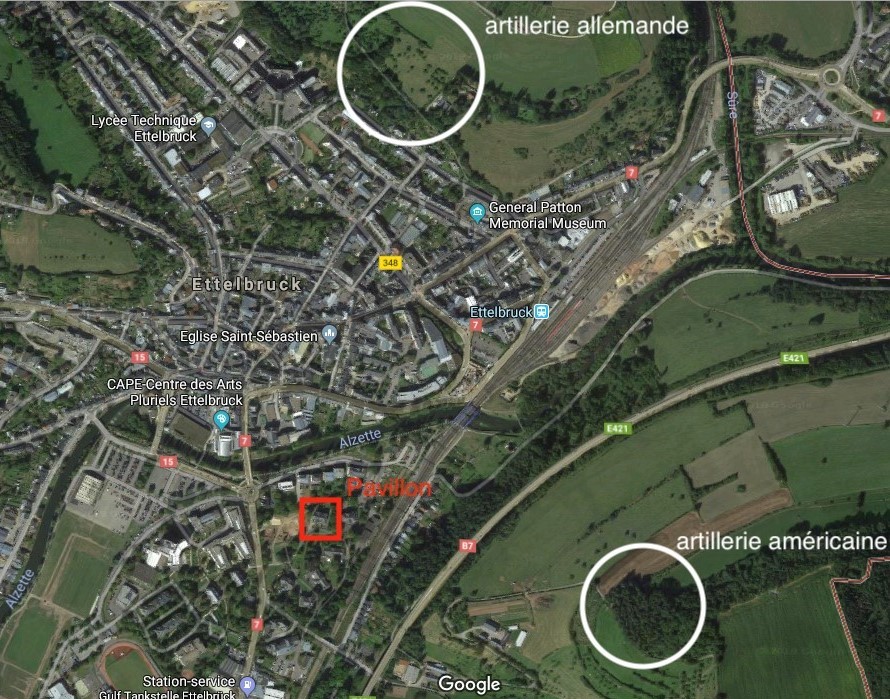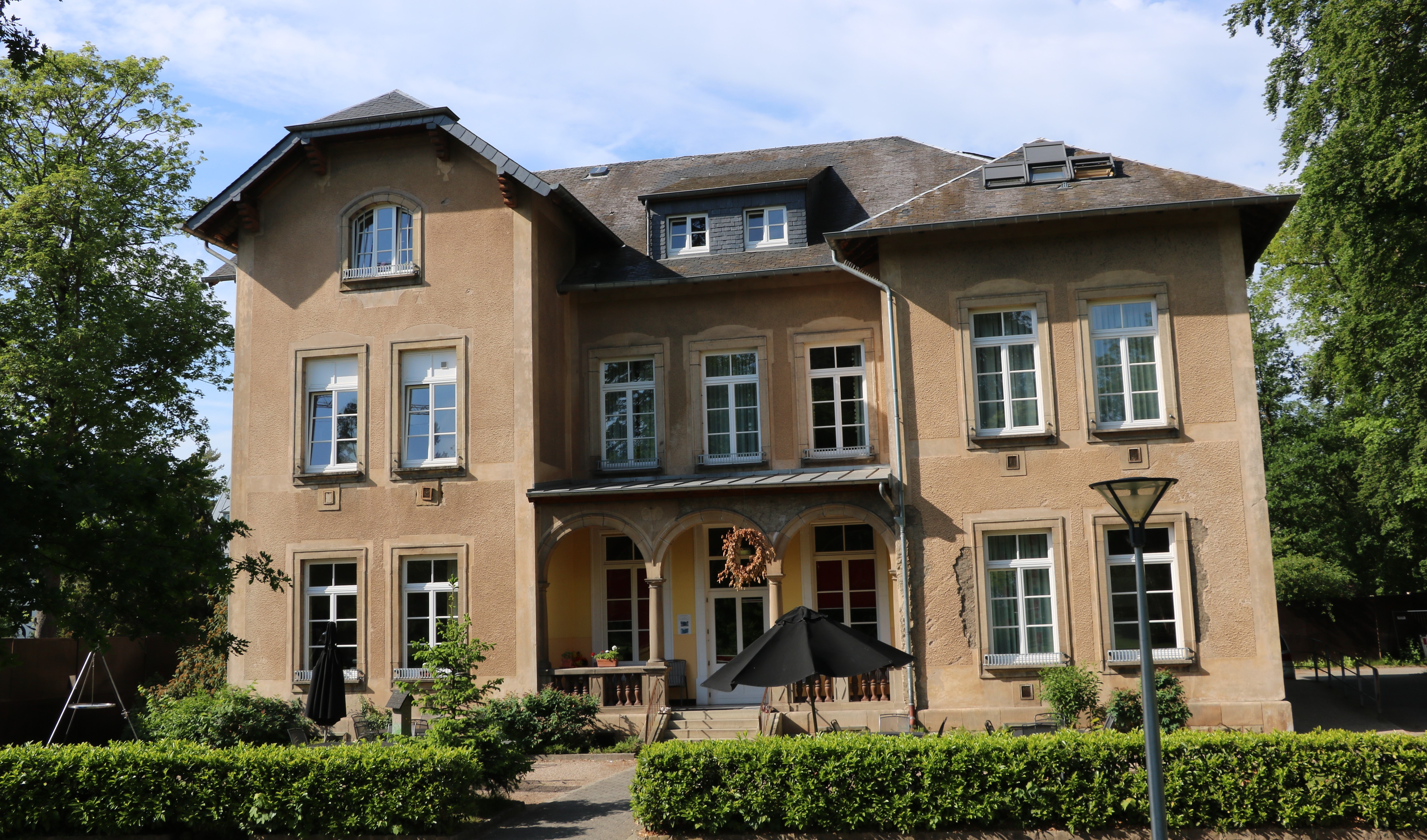Under Ettelbruck
During the Second World War, the different buildings of the Maison de Santé were used as a field hospital, just like the pavilion. Before the Americans arrived in 1944, the Maison de Santé was under German administration due to 85% of the personnel taking part in a demonstration against the Nazi Regime on the 31st of August 1942. In fact, a lot of Luxembourgers protested and went on strike, right after the announcement of the compulsory military service. Thereafter, the director and the head nurse were forced to retire and the institute was then entrusted to an “Obermedizinalrat” of Düren, Dr Heinrich Schaefgen, and “Oberpfleger” Franz Schmitz (SPAUTZ, pp. 195-196).

In December 1944, Ettelbruck witnessed the “Von Rundstedt Offensive” and the town was hit by shells on the 17th. The Americans left Ettelbruck and moved to the Northeast highlands. The purpose of the US army in this area was to maintain positions and an American artillery was placed on the Nuck. On the other side, German artillery shelled Ettelbruck. As the Americans fired back, shells hit the town and the Maison de Santé.
The evacuation of the inhabitants of Ettelbruck only started on the 19th of December 1944. Hundreds of patients, together with approximately twenty nurses evacuated towards the South of the country (Hospice du Rham, Luxembourg City, Bertrange). Many of them took the opportunity to escape, while 600 patients went down to the basements transformed into vaults. Technical services continued to function and the medical staff stayed in office thanks to approximately 40 hospital sisters and 8 nurses (SPAUTZ, pp. 194-196).

Pastor Joseph Bertrang wrote what was happening in the Maison de Santé. He explained that measures had been taken by Dr. Schaeftgen to protect the basements and make them appropriate for use: hot water and electricity were provided, as well as a radio to stay in touch with the outside world and the war. However, fear and worry were in the air, as life underground was hard and shells fell intermittently day and night. Nonetheless, healthy people did what was not believed possible to manage underground: kitchen, laundry, buying heating equipment and food, while the regular shifts of hospital nurses could reach 24 hours a day. Yet, those jobs were not safe because, as they had to leave the vaults, they were threatened by bombings. According to Pastor Joseph Bertrang, no matter the situation, a satisfactory solution was found, regular meals were provided, and the Maison de Santé hosted people looking for shelters (BERTRANG, pp. 5-14).
Finally, except for some depressions during the offensive, there was no increase in psychosis due to the war. It is interesting to know that some members of the medical staff were degraded, displaced or even deported, following their participation in the anti-Nazi demonstration. Moreover, a sister and at least one female patient were killed by the bombings; 6 employees and 2 nurses had made common cause with the Germans during the conflict. They were forced to leave the country at the end of the war.
No resident of the Maison de Santé had been euthanised because of their mental illness, as it can be seen in Germany before the war and until August 1941. However, the deportation of 11 patients was confirmed in several publications (SPAUTZ, pp. 196-200).
Click here to see a photograph from the U.S. National Library of Medicine’s Digital Collections of the pavilion turnt into a military hospital!
